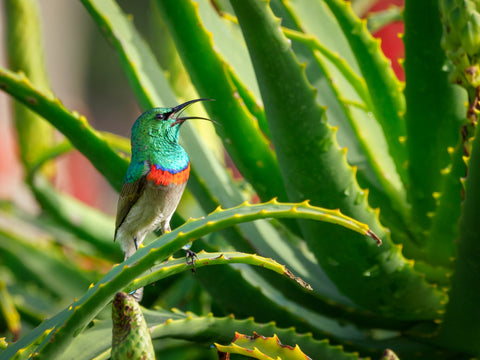Unraveling the Mystery of Hummingbird Migration Patterns
In this blog post you'll learn tips and tricks on hummingbird migration patterns, and much more.
The natural world is rife with mysteries, and few are as captivating as the phenomenon of bird migration. Among these intrepid travelers, hummingbirds stand out for their extraordinary journeys spanning thousands of miles.
Here's our best selling hummingbird feeder brush as it's important to keep our feeders super clean.

These tiny creatures, known for their vibrant colors and remarkable flight capabilities, embark on awe-inspiring migrations that have puzzled scientists and intrigued nature enthusiasts for decades. Let's dive into the fascinating world of hummingbird migration patterns and unravel the secrets behind their incredible journeys.
The Whispers of Instinct
The journey of hummingbird migration begins as a whisper of instinct. As the seasons change and resources fluctuate, these tiny birds receive a silent cue to embark on an arduous journey. While the exact triggers for migration remain a subject of ongoing research, factors like changing day length and decreasing food availability seem to play a significant role in signaling the need to move.
Aerial Explorers
The journey of a migrating hummingbird is no casual flight. These birds are true aerial explorers, navigating vast distances with precision. Unlike other birds that travel in flocks, most hummingbirds embark on solitary migrations, relying solely on their own navigational abilities.
Here's one of our best selling hummingbird feeders.

One of the most remarkable aspects of hummingbird migration is their ability to remember and return to specific locations. Scientists speculate that they use a combination of visual cues, the position of the sun, and the Earth's magnetic field to orient themselves. Recent research has also suggested that hummingbirds might possess a specialized protein in their eyes that allows them to see ultraviolet light patterns, which could aid in navigation.
The Long and Varied Journeys
Hummingbird migration routes are as diverse as the species themselves. Some species travel incredible distances, while others stick to more localized movements. For instance, the Ruby-Throated Hummingbird embarks on a non-stop 500-mile flight across the Gulf of Mexico to reach its wintering grounds in Central America. This remarkable feat requires them to double their body weight before the journey to ensure they have enough energy to complete the trip.
Other species, like the Rufous Hummingbird, embark on epic migrations along the western coast of North America. These tiny birds travel from their breeding grounds in the Pacific Northwest all the way to their wintering areas in Mexico. The Rufous Hummingbird's migration covers a distance that is nearly equivalent to traveling the Earth's circumference.
Navigating Perilous Challenges
The journey of a migrating hummingbird is fraught with challenges at every turn. From weather disturbances to exhaustion and finding food along the way, these tiny creatures face odds that seem insurmountable. They must navigate urban landscapes, cross vast bodies of water, and traverse unfamiliar territories, all while relying on their innate navigation skills.
Looking for the ultimate gift for a hummingbird fan? Why not a beautiful hummingbird canvas?
The Role of Conservation
Understanding the intricacies of hummingbird migration patterns is not only a scientific curiosity but also a matter of conservation. With the impact of climate change, habitat loss, and shifts in plant blooming patterns, hummingbirds face new challenges in their migratory journeys. Studying their movements and behaviors can help us better comprehend the effects of these changes and develop strategies to mitigate their impact.
The Beauty of Connection
Beyond the scientific significance, the mystery of hummingbird migration resonates with a deeper sense of connection to the natural world. Their journeys remind us that we are all part of a vast tapestry of life on this planet. Just as hummingbirds rely on their instincts and navigational skills, we too are connected to the rhythms of the Earth, the changing seasons, and the ebb and flow of life.
Take your love for hummingbirds everywhere with this beautiful hummingbird scarf.
A Symphony of Wonders
Hummingbird migration patterns remain a symphony of wonders, an intricate composition of biology, navigation, and survival. The more we uncover about their journeys, the more we are humbled by the mysteries that nature still holds. These tiny avian travelers inspire us to look up at the sky, to follow the whispers of instinct, and to remember that even the smallest creatures are part of grand narratives that span continents and touch our hearts.

As we watch these delicate creatures embark on their incredible migrations, let's take a moment to reflect on the beauty and resilience that define the natural world. In the hummingbird's wings, we find a testament to the marvels of life, the mysteries that challenge our understanding, and the boundless wonders that await our exploration.















